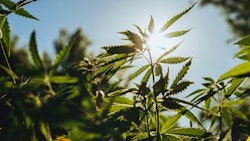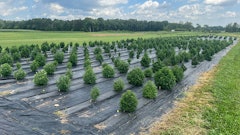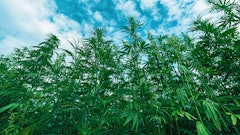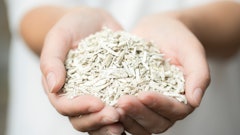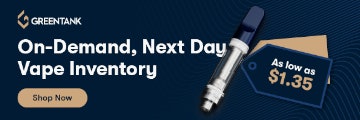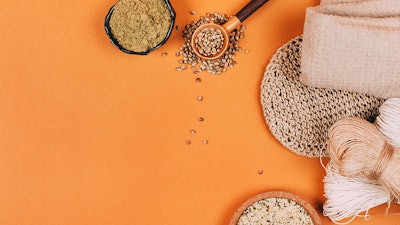
In recent years, hemp products have enjoyed a surge in popularity. New and innovative products have been released throughout the last decade that have allowed consumers to enjoy the benefits of hemp for everything—from easing anxiety to rubbing away pain with a cannabis sativa-infused balm.
Although hemp products have been used for thousands of years, modern innovators in the space are just beginning to realize how versatile hemp products can be. Hemp is a natural product that is renewable, biodegradable, and unlike marijuana, has minimal THC but high levels of CBD, which can have beneficial effects.
Here are five ways hemp is being used, enjoyed, and employed, and what consumers can expect from this beneficial botanical (and what businesses leaders should keep in mind).
1. Healing hemp uses
Using hemp and CBD products for healing purposes dates back to ancient China, whose people used hemp for pharmacological purposes as far back as 2800 B.C. Today, hemp CBD oils and infused products are used for anxiety, pain relief, and insomnia—to name just a few of the applications. CBD has also been employed in Epidiolex, one of the first and only FDA-approved hemp-related products, used to treat people with epilepsy.
Studies point to the medicinal benefits of CBD and hemp products being wide-reaching. Some people use them for everything from the easing of diabetic complications, such as neuropathy, to treating opioid withdrawal symptoms.
2. Nutrient-rich foods
Next to the wellness benefits of hemp for healing purposes, food that utilizes hemp or hemp by-products can also help improve one’s bodily health and wellbeing. Hemp seeds, for example, are a popular ingredient for many recipes and are a rich source of fatty acids, including omega-3—a heart-healthy fat—as well as calcium, fiber, and iron.
Hemp has been a staple ingredient outside the Western diet for centuries, and its use is catching fire in the West as of late. Hemp seeds are versatile in and of themselves, as they can be used as a milk substitute for vegan diets or for those who are lactose intolerant, as well as in salad dressings or as a substitute for vegetable or olive oil.
3. Beauty benefits
Since hemp is laden with fatty acids, this makes it a prime candidate for use in beauty products. Due to the wealth of these fatty acids and additional vitamins found within hemp, the beauty products made from it are less likely to be irritating to the skin.
Hemp oil is nourishing and moisturizing, and is particularly useful for dry skin, peeling cuticles, and dry hair follicles. Hemp can also reduce inflammation and has been successfully used in after-sun care and anti-acne treatments. Additionally, the vitamins contained in hemp can have anti-aging properties, plumping and moisturizing thin, dry, aging skin, giving way to more luminous skin underneath.
4. Safer smoking
According to American Lung Association statistics, rates of cigarette smoking are down significantly compared to just 10 years ago. People are less interested in risking high rates of cancer just to enjoy cigarettes.
However, hemp cigarettes often come without the nicotine or other additives that make traditional cigarettes so dangerous, meaning smokers can still get the feeling of inhaling and the oral fixation without the adverse effects of cigarettes. In addition, unlike smoking marijuana (THC), CBD has no hallucinogenic properties. Although no form of smoking is 100% without health risks, switching to hemp cigarettes can help one step down from traditional cigarette smoking.
5. Clothing and material uses
Like the use of hemp for its medicinal properties, hemp used for clothing, rope, and building materials is an ancient practice. With the surge of interest in sustainable construction and building practices, a return to the use of hemp in building materials may be exactly what developers and construction innovators have been looking for.
Recently, the Pierre Chevet Sports Hall in Paris became the first building to be constructed completely out of hemp blocks. Hemp is fire and mold resistant, and is also carbon-neutral.
In addition to being used for building purposes, hemp can also be used for clothing. With a critical eye on the fast fashion industry and its effect on the environment, the sustainability of hemp for clothing is worth a look.
Hemp cultivation typically improves soil fertility—rather than eroding it—requires little to no chemical intervention for cultivation, and hemp fibers are incredibly strong and long-lasting. Although hemp fabric is more expensive than cotton, the sustainability factor is still appealing to those looking for wearables that are not harmful to the environment and will last longer than most fast fashion creations.
There are a number of innovations being made with hemp in recent years, and the cultivation of hemp is on the upswing. People seeking ways to ease anxiety, sleep better, or quell aches and pains may consider turning to hemp products for answers.
Those seeking ways to combat climate change can consider hemp for building projects or clothing needs. As innovators continue to develop new ways of using hemp, society stands to benefit in a variety of ways.
Jorge Olson is the co-founder and CMO of two publicly traded companies, Hempacco, ticker symbol HPCO, and Green Globe International, ticker GGII. Olson was born in Tijuana, Mexico, without running water or electricity, hurdling buckets of water across a block several times per day. Now, Olson is the author of business and inspirational books, as well as an authority on consumer packaged goods, beverages, and wholesale distribution. His partners are super-entrepreneur Sandro Piancone, Cheech and Chong, James Linsey, Rick Ross and Snoop Dogg.









